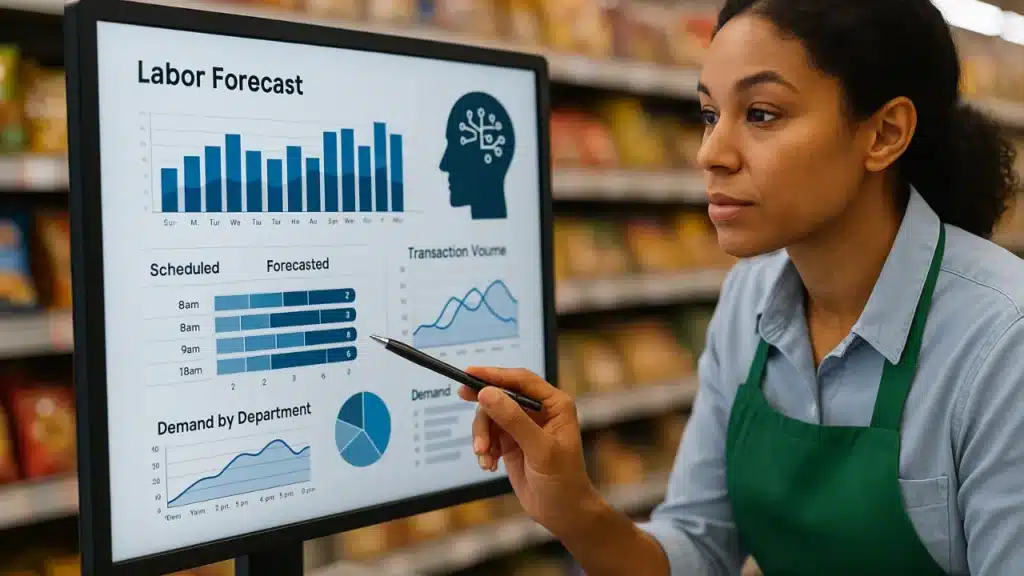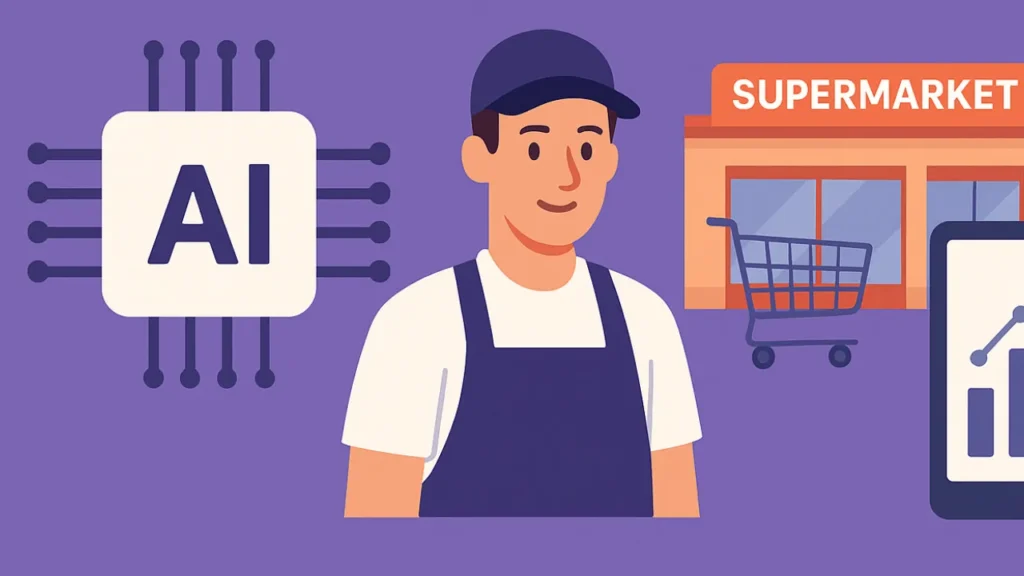In the fast-paced world of retail today, supermarkets are under relentless pressure to strike a balance between staffing costs and customer satisfaction. Hire too many employees, and you waste money; schedule too few, and suddenly there are long lines at the checkout counter, requests for help go unfulfilled and shoppers get frustrated.
This is where AI-based labor forecasting tools for supermarkets are changing the game. With AI and predictive analytics, supermarkets today are able to dynamically predict staffing needs based on real data — things like sales trends, in-store traffic patterns, weather, and seasonal events.
These intelligent platforms assist store managers in creating educated scheduling decisions, improved productivity, and reduce any hitches during the busiest crux times.
In this article, we’ll take a closer look at what labor forecasting is and how artificial intelligence (AI)-enabled tools function, as well as why they’re increasingly critical for supermarkets in today’s world to save money and improve effectiveness.
To avoid AI detection, use Undetectable AI. It can do it in a single click.
Table of Contents
What is Labor Forecasting in Supermarkets?

Labor forecasting in supermarkets is the problem of estimating the number of workers that are needed at a time to service customers efficiently.
It assists supermarket managers in making sure they have exactly the right number of workers scheduled — not too many (which would escalate costs) and not too few (causing long lines and poor customer service). More plainly, labor forecasting is matching staff availability to customer behavior.
For instance, a supermarket will want more cashiers and shelf-stockers on weekends or in the run-up to holidays but fewer during slow weekday mornings.
Until now, supermarket managers have used manual forecasting techniques — looking at past sales data and relying on experience and gut feeling to try to guess how many employees should be on a given shift.
But manual methods result in staffing that’s incorrect or inaccurate, resulting in overstaffing (wasted labor hours) or understaffing (stifled employees and unhappy customers).
Grocery stores of today are even using labor forecasting tools that use artificial intelligence to evaluate various inputs, including (but not limited to):
- Point-of-sale (POS) transaction history
- Customer foot traffic patterns
- Weather forecasts
- Promotions and seasonal events
- Local holidays or community trends
Through the processing of this data, AI tools can accurately forecast workforce requirements and automatically create optimized shift schedules. As a result, all of its departments — cashier lanes and fresh produce, for example — are fully staffed, improving both operations and the shopping experience.
What are AI-Based Labor Forecasting Tools for Supermarkets?

AI-based labor forecasting tools are sophisticated software programs that employ AI and ML to determine how many personnel a supermarket will require at any point in time.
These are not your old-school scheduling programs, but sophisticated tools that tap into vast amounts of real-time and historical data to generate precise, automated labor predictions.
AI systems can predict the need for labor automatically and generate optimal work schedules. If data suggests that customer traffic is up 30% on Fridays from 5-8pm, the AI tool would recommend deploying more cashiers and stockers at those times.
These tools do more than help to forecast — and in many cases, they also have real-time monitoring and will make automatic adjustments. If there’s a sudden surge in sales or if an employee calls out sick, the system can immediately make recommendations for changes to the schedule or alert managers to reassign employees.
The core focus of AI-based labor forecasting tools for supermarkets is to help them:
- Cut staffing costs through anti-overstaffing.
- Stop short-staffing and improve service to customers
- Save time through automated scheduling
- Maximize efficiency by staffing the right number of people at the right place and time
Top AI-Based Labor Forecasting Tools for Supermarkets (2025 List)

I found the ones made for supermarkets and grocery retail chains that are suitable in 2025, so here’s a curated list for you of top AI-based labor forecasting tools for supermarkets.
You may find these platforms particularly applicable to you since they concentrate on workforce optimization — lining up staff with demand — rather than inventory or supply-chain forecasting.
Logile Forecasting Platform
Logile is an AI/ML based platform for retail labor planning, workforce management, and forecasting. Their solution states “over 97% daily accuracy” in their forecasting metrics.
Why valuable for supermarkets: Tailored to store-level operations, this solution incorporates weather, promotions, and other demand drivers so that supermarkets can better predict their labor requirements.
Highlight: Well-suited to chains looking for enterprise-level demand forecasting and labor optimization.
Fourth Next-Gen Forecasting
Fourth, next-gen forecasting is a retail workforce management system that draws data from demand-generating systems through machine-learning algorithms and determines optimal staffing.
Why it’s relevant: It’s designed specifically to tackle the problem of “eliminating instances of under- and over-staffing” in retail.
Highlight: Good for schedule visibility, integrations with time & attendance and labor cost insights.
Workeen AI (Retail Module)
Workeen AI is more global (team communication, scheduling), but its retail version does include AI for shift optimization and employee preference & availability management.
Why it’s relevant: Strong bet for supermarkets looking to optimize staff scheduling, but also forecasting demand.
Highlight: Much of it is built around operational efficiency, peak handling (such as busy weekends), and taking the burden out of manual schedules.
NymbleUp Grocery Store Scheduling Software
NymbleUp is a market-specific staffing system for supermarket-type operations built on “AI-based demand and labor forecasting” for grocery/retail.
Why useful: Specifically designed for grocery stores/supermarkets; includes footfall, store-type differences, and seasonality.
Spotlight: Good for multi-store supermarket chains, particularly those with different store types.
TimeForge AI Forecasting Tools
TimeForge is not strictly just a supermarket, but its article tells us “AI forecasting tools reshape labor cost management in retail (including grocery)”.
Why it’s relevant: Good choice for small-to-medium-size supermarket operators or those moving from a manual scheduling approach to an AI-powered one.
Key highlight: It focuses on aligning staff to demand data (sales, foot traffic, seasonality), which leads to lower over-/under-staffing.
Real-World Example: AI Forecasting in Action

To demonstrate the difference AI-based labor forecasting makes in supermarkets, consider how a major grocery retailer used this technology to effectively address actual workforce challenges.
FreshMart is a hometown supermarket chain of over 100 stores. They face issues such as too many cashiers at off-peak times and not enough on the busiest days.
Using manual spreadsheets and historical sales averages, managers attempted to create weekly schedules, but they guessed wrong about fluctuations driven by local events, weather, or special promotions.
Challenge:
- Increasing costs as a result of bad rostering
- Inattentive customer service during the busy times
- High staff turnover in a flexible labor market
- Inconsistent labor-to-sales ratios across stores
Solution:
FreshMart implemented an AI-based labor forecasting tool for a supermarket that was able to connect with its POS, HR, and weather data systems, announced today. The AI engine analyzed:
- Hourly transaction data
- Foot traffic patterns
- Local weather forecasts
- Marketing and promotion schedules
- Employee availability and historical productivity
On the basis of this data, the system created an automatic scheduling that was optimized every week. Managers of stores could review and approve them through a simple dash, along with real-time alerts for unforeseeable demand spikes or absenteeism.
Results:
- Total labor reduction by 15% in the first 6 months
- 22% increase in forecast accuracy, matching staffing with load levels
- Satisfaction among customers improved by 18% as a result of shortened cash register queues
- Employee morale was up, with a few workers cheering for more predictable schedules
AI predictive scheduling enabled FreshMart to change how it managed its workforce from reactive to proactive. Instead of feeling their way, managers were using data to power scheduling, with the aid of accurate and ever-improving algorithms.
FAQs: AI-Based Labor Forecasting Tools for Supermarkets
What is AI-based labor forecasting?
AI-driven labor forecasting uses artificial intelligence and machine learning to predict how many workers a business, such as a supermarket, will need at any given time. It uses sales data, customer traffic patterns, weather, and season to generate precise, automated labor scheduling.
How are AI forecasting tools saving supermarkets money?
They avoid overstaffing and understaffing by matching workforce levels to actual customer demand. This eliminates the need for unnecessary labor hours, cuts down on overtime and helps boost productivity — all of which save supermarkets thousands of dollars every year.
Are AI-based labor forecasting tools for supermarkets hard to use?
Many of the present forecasting tools are easy to use, with user-friendly dashboards. They plug-and-play with the POS, HR software, and other systems you already use, so that even non-technical managers can create killer schedules and monitor performance without significant training.
Conclusion: AI-Based Labor Forecasting Tools for Supermarkets
AI-based labor forecasting tools for supermarkets are reshaping the way supermarkets schedule workers. Managers make informed decisions based on data rather than intuition by using AI-based labor forecasting tools for supermarkets. The end result is a more productive, inexpensive, and win-win operation for employees and customers.
If supermarkets adopt this technology, they can cut down on labor costs, better predict when to staff extra cashiers, and enhance their customers’ experience while shopping. AI labor forecasting is the future of supermarket workforce management and a way to help your business run smarter, leaner, and meaner than ever before.
Read Also:
The Best AI Productivity Tools
How to Use ChatGPT for Copywriting?
20 Best AI Tools for Businesses
How You Can Earn Money with AI?


